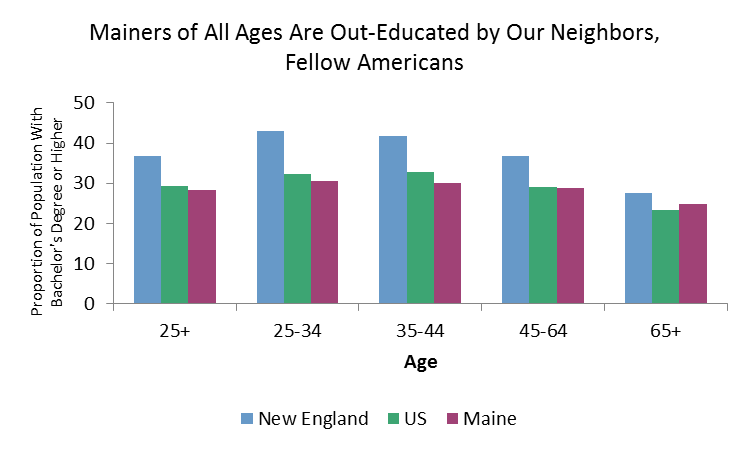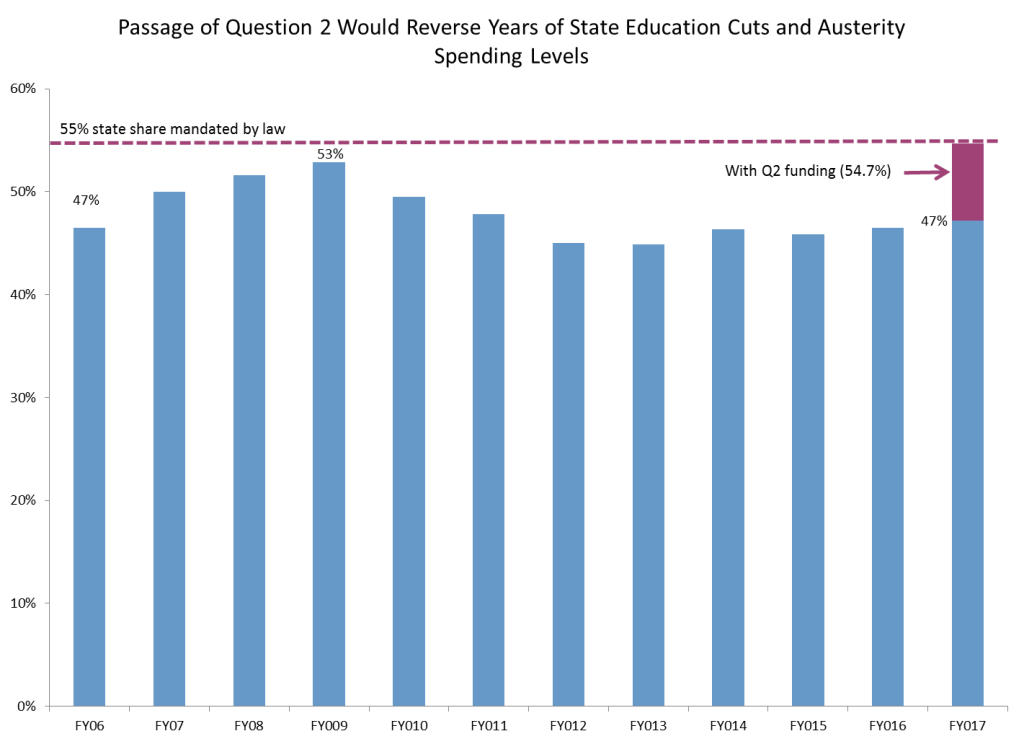Maine’s future economic success depends on having a well-skilled workforce able to tackle the challenges of the twenty-first century – and the means of developing that workforce is through the education of our children. Research indicates that investment in education is not only one of the best economic decisions a state can make, but that the earlier we direct resources at students, the more impact it has on their future success. This November, Mainers will have the opportunity to increase funding for our children’s education by more than $150 million every year, by asking the wealthiest households to pay their fair share. 96% of Maine’s students will receive an average of $918 each in extra state aid – funding that schools can use to broaden students’ horizons, prepare them for a changing economy, and reversing the effects from years of cuts in state funding.
Maine’s workforce stands out as below average in a region known for its high levels of educational attainment; while 28% of adult Mainers have a bachelor’s degree or higher qualification, that’s far less impressive than the 40% of Bay Staters with a similar credential. Even our neighbors in New Hampshire and Vermont are better educated than we are. Most worrying of all, these disparities are not just down to Maine’s older workforce, but are just as true of new job market entrants as they are of older workers. Maine’s business leaders recognize this, because a business cannot grow without skilled workers. Educate Maine, a business-led group advocating for education, recently released its 2016 Education Indicators for Maine report, in which it highlights the need for improvements across grade levels – from greater use of public pre-K programs, to higher college completion rates. All would require more investment in Maine’s schools. Making Maine Work, a joint project of the Maine State Chamber and Maine Development Foundation, has consistently urged the need for educating a bigger and better workforce in order for Maine businesses to thrive – and that can’t be accomplished without well-resourced schools.

Schools should prepare our children for whatever the future brings, not only in their careers. That means introducing the next level of Mainers to a broad array of cultural experiences, learning opportunities, and new perspectives. Our students lose out when our schools are forced to replace foreign-language teachers with computer programs, can’t afford to take field trips, and drop programs like music, reducing school curriculums to the bare necessities dictated by standardized testing. Schools should also be centers of community, as they have traditionally been in Maine – especially in small towns across the state. But when funding cuts force schools to cut sports programs, or pit town against the town in contentious budget battles, the whole community suffers. Failure to reverse the austerity-level spending of the past eight years has undermined our schools’ ability to instill a love of learning in our students and pride in our communities. Only by making sure schools are well-resourced can we move beyond the basics and restore schools at the heart of thriving Maine communities.

Mainers value their schools, and this state has a long tradition of valuing public education. But it’s time we lived up to our values and gave our children the top-quality education they deserve. It’s not only the right thing to do for them, but it’s the only way to put Maine on the right track for a prosperous economic future. If we want an economy that works for everyone and provides equal opportunity to all Mainers, we need to make sure that commitment begins in our schools, with our youngest residents. Asking the wealthiest households to contribute their fair share will allow our economy to prosper, provide every child with the same opportunity at success, and create thriving communities.



